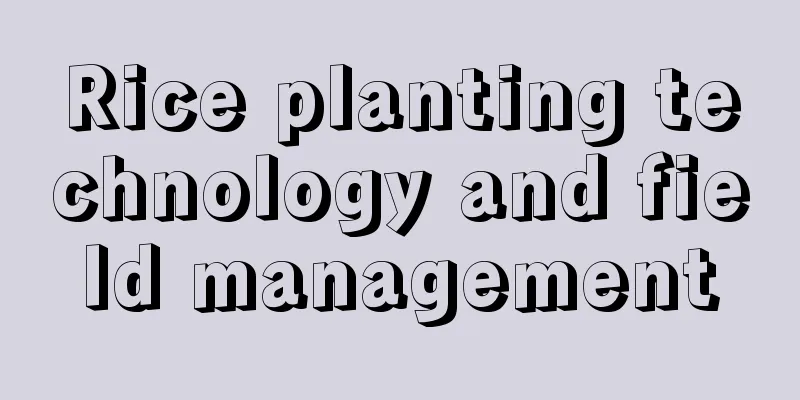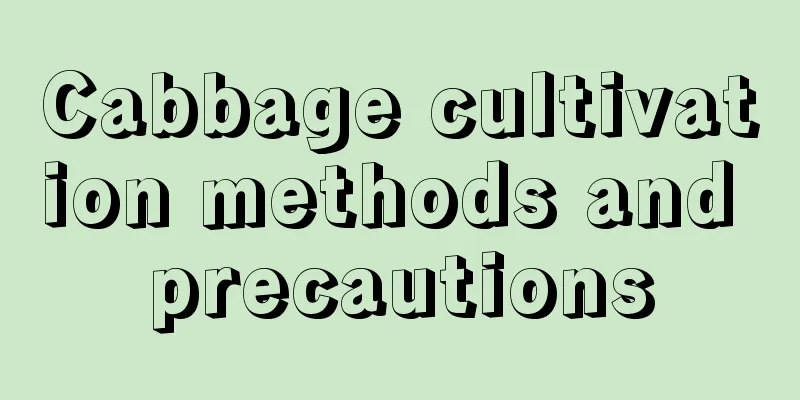Rice planting technology and field management

|
As a vital food crop in my country, rice is widely grown across the country and is distributed in all regions. With the remarkable progress of agricultural science and technology in China in recent years, rice cultivation technology has also been comprehensively improved. Let’s learn about rice planting techniques and field management together. 1. Scientific seed selection The first step to increase rice yield is seed selection. When selecting rice seeds, the adaptability and quality of the seeds must be considered to ensure that they can achieve their maximum potential under specific soil and climatic conditions. Seed selection should be based on two key points: ensuring that seed quality meets planting standards to support normal growth and improve planting benefits. Consider the soil and climate conditions of the planting area and choose the most suitable rice seeds to increase yield. 2. Seed treatment Reasonable seed treatment technology is essential to promote rice growth and increase yield. The main goals of seed treatment are to improve yield and quality, including: Germination test: To ensure that the rice seeds can grow normally in the area, the germination rate must reach more than 85%. Drying and disinfection: Kill pathogens and increase germination rate through exposure to the sun and soaking in chemicals. 3. Field management Field management is the key to improving rice planting efficiency and yield. Choose the best management techniques according to the rice variety and environment to control soil moisture and oxygen content. Develop a weeding plan and select the right technology to provide good growing conditions for rice. 4. Fertilization and irrigation According to the growth status of rice, supplement fertilizer reasonably and optimize the fertilization plan. Develop scientific irrigation plans, taking into account cultivation techniques and rice variety characteristics, and avoid excessive irrigation. 5. Pest and disease control Use insect repellents reasonably, choose liquid medicines suitable for different pests and diseases, avoid using highly toxic agents, and replace agents regularly to prevent pests from developing drug resistance. In summary, my country has a wide range of rice-growing areas, providing people with a rich source of food. In view of the differences in soil and climate in different regions, it is necessary to choose appropriate cultivation techniques according to local conditions to promote the healthy growth of rice and increase yield.
|
<<: Suitable for leaders' office green plants
>>: When do Phalaenopsis orchids bloom?
Recommend
What are the poisonous flowers?
1. Oleander The whole plant of oleander is poison...
What is the best fertilizer for aloe vera?
Aloe Vera Fertilizer Time Aloe vera is generally ...
How to grow carambola in a pot
How to grow carambola in a pot Select pot The siz...
How to grow tricolor bindweed
1. Planting environment This plant is usually cul...
How to grow Daphne odora to make it bloom
Flowering time of Daphne odora Osmanthus fragrans...
How to grow Clivia to make it bloom
1. Appropriate amount of light If you want the Cl...
How to make a flower basket with succulents
1. Preparation of succulents In order to make the...
What is the best month to plant fire ginseng fruit?
When is the fire ginseng fruit planted? The fire ...
Three tips for growing flowers at home
It is advisable to grow flowers with strong drug ...
What is the reason for the buds of Christmas cactus to fall off?
1. Lighting 1. The plant needs to receive suffici...
How to save aloe vera root rot
1. Main reasons (1) Too much watering: Aloe vera ...
How to drink monk fruit in water, what are the effects and contraindications
1. Soaking method When soaking in water, first se...
Can cacti be grown indoors?
Can cacti be grown indoors? Cactus can be planted...
Planting technology and management of snow peas
The cultivation of snow peas has enriched the typ...
How to grow succulent cones
1. Medium When growing succulent cones, you can u...









